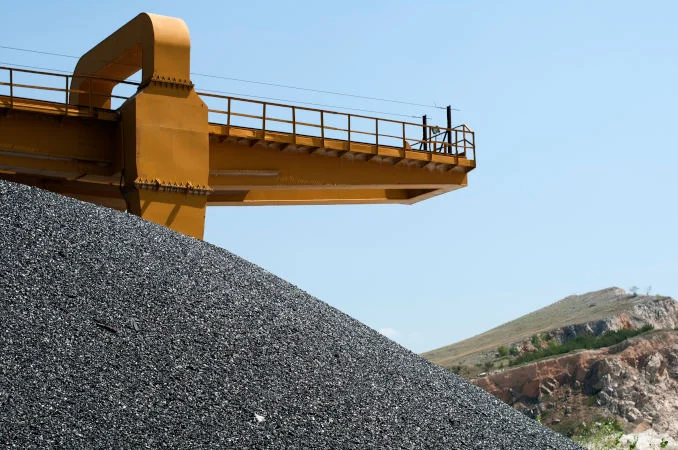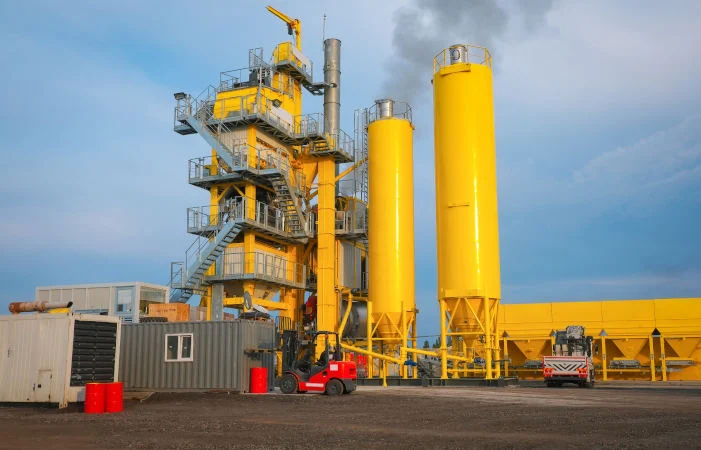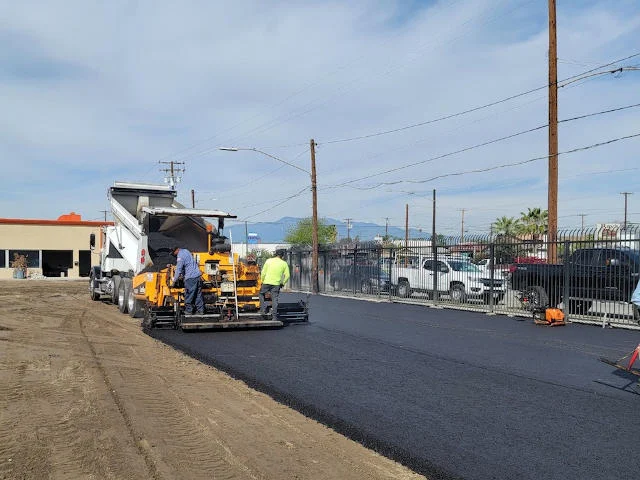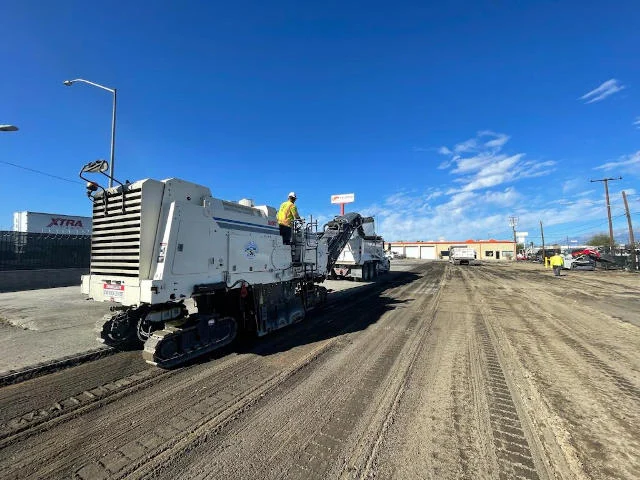Driving on a smooth road is one of life’s simple pleasures, but have you ever wondered about the life cycle of that very road beneath your tires? Asphalt, often taken for granted, holds the unique title of being America’s most recycled material. Remarkably, each year sees close to 100 tons of asphalt being recycled in the US. In this blog post, we delve deep into the process of asphalt recycling, highlighting its environmental benefits and its pivotal role in modern infrastructure. Join us as we journey from the old roads to the new, all through the magic of recycling.
What is Asphalt Pavement?
Before we dive into recycling asphalt, its important to understand what materials are in asphalt. At its core, asphalt pavement is a blend of aggregates and binder, meticulously formulated an manufacture to create the surfaces we drive and walk on every day. Let’s break it down:
Aggregates
This consists of crushed stone, sand, and gravel. These elements make up the majority of the asphalt mixture, providing it with the necessary strength and durability.
Binder
Often referred to as asphalt cement or simply “bitumen”, the binder is a byproduct of petroleum refining. It acts as the ‘glue’ that holds the aggregates together. When heated, it becomes liquid and effectively binds with the aggregates to create a solid, durable pavement once cooled.

The Asphalt Recycling Process
Asphalt recycling isn’t just environmentally conscious; it’s also an economically sound practice that reduces costs and conserves raw materials. Here’s a step-by-step breakdown of how old, worn-out asphalt pavements find new life:
Milling and Transport
Old asphalt pavement is first removed from roads, parking lots, or other surfaces. This is often done using milling machines or during full-depth removal procedures. The reclaimed asphalt pavement (RAP) is then transported to recycling facilities.
Crushing and Screening
Upon arrival, the RAP is processed by crushing it down into smaller, consistent sizes. Any oversized materials or contaminants are screened out, ensuring the end product is pure and suitable for reuse.
Mixing
The crushed RAP is mixed with fresh asphalt binder and, sometimes, new aggregate. This blending can occur at a central plant or directly at the job site using mobile mixers. The amount of new material added typically depends on the intended use of the recycled mix and its quality requirements.
Heating
The mixture is then heated to between 270° F and 325° F, allowing the binder to effectively coat the aggregates and ensuring proper compaction once laid.
Quality Control
Throughout the recycling process, various tests are performed to ensure that the recycled asphalt meets the required specifications. This is essential for ensuring the longevity and performance of the finished product.
Is it cost effective to recycle asphalt?
Absolutely! Recycling asphalt is not only beneficial for the environment but also offers several economic advantages, making it a win-win solution for the infrastructure, commercial paving and residential paving projects. Here are some reasons why recycling asphalt is cost-effective:
Reduction in Raw Material Costs
By using reclaimed asphalt pavement (RAP), there’s a significant reduction in the need for virgin aggregates and asphalt binder. Since these materials constitute a substantial portion of the pavement’s cost, using recycled components can result in significant savings.
Decreased Disposal Costs
When old asphalt is removed and not recycled, it often ends up in landfills. Disposing of such vast amounts can be expensive. By recycling, these costs are either dramatically reduced or eliminated.
Energy Savings
Producing new asphalt requires energy, especially during the extraction and manufacturing of raw materials. Reusing old asphalt reduces the need for this energy-intensive process, translating to cost savings.
Extended Lifespan
Modern recycling techniques ensure that recycled asphalt matches, if not exceeds, the quality of new asphalt. This means that roads and pavements made of recycled asphalt can have a long lifespan, reducing the frequency and costs of repairs or replacements.
Stable Prices
Recycled materials can help stabilize costs since they’re less affected by market fluctuations that impact the prices of virgin oil and aggregates.
7. Incentives and Grants Many governments and institutions offer incentives, grants, or tax breaks for sustainable and environmentally-friendly practices, including asphalt recycling.

Recycled Asphalt vs. Virgin Asphalt: A Performance Perspective
The performance of recycled asphalt has been a topic of interest for engineers, urban planners, and environmentalists alike. With advancements in technology and better understanding of materials, the gap between recycled and virgin asphalt has considerably narrowed. Here’s an overview of how recycled asphalt fares against its virgin counterpart:
Quality of Binder
The binder in recycled asphalt pavement (RAP) has undergone a certain degree of oxidation due to its prior exposure to the elements, making it stiffer than new binder. However, modern recycling methods often introduce rejuvenators or softening agents to restore the aged binder’s properties, thereby ensuring that the recycled mixture performs similarly to virgin asphalt.
Mixture Consistency
When recycling processes are controlled accurately—ensuring the right proportion of RAP, new binder, and aggregates—the consistency of the recycled mix can be very close to that of virgin asphalt. Quality control is key.
Durability Studies
have shown that pavements with a moderate percentage of RAP (typically 15-30%) can have equivalent or even better longevity and resistance to rutting compared to those made entirely from virgin materials. However, as the percentage of RAP increases beyond certain thresholds, careful considerations and adjustments in mix design are necessary to maintain optimal performance.
Fatigue Resistance
With the right mixture and rejuvenators, recycled asphalt can exhibit fatigue resistance on par with virgin mixes, allowing it to withstand the stresses of heavy traffic without cracking prematurely.
Temperature Susceptibility
Recycled asphalt’s performance in varying temperatures can be similar to that of virgin asphalt, provided the mix design is optimized. This means that in both hot and cold climates, a well-designed recycled asphalt pavement can perform just as well as a virgin one.

Does California Encourage Paving Companies to Recycle Asphalt?
Yes, California has long been a champion of sustainable and environmentally-friendly practices, and the emphasis on recycling asphalt in paving projects is no exception. Here’s how California is leading the charge in supporting asphalt recycling:
Legislation Promoting Recycling
On Sept. 30, 2022, California Gov. Gavin Newsom underscored the state’s commitment to environmental responsibility by signing bill A.B. 2953 into law. This pivotal legislation mandates local governments and highway agencies in California to utilize recycled materials, including asphalt, for road repair and construction projects whenever feasible. Such a step not only paves the way for a greener future but also emphasizes the state’s confidence in the efficacy and durability of recycled materials.
Caltrans Specifications
The California Department of Transportation (Caltrans) has established specifications that champion the use of reclaimed asphalt pavement (RAP) in new asphalt concoctions. These specifications serve as a blueprint, ensuring that recycled materials meet stringent quality standards for various paving initiatives.
Green Public Procurement (GPP)
In line with the state’s green initiatives, numerous municipalities and public agencies in California have embraced green purchasing policies. Such measures often favor contractors and providers who prioritize the use of recycled materials in their offerings.
Cities With GPP Standards
Riverside, San Bernardino, Corona, Eastvale, Murrieta
Landfill Diversion Goals
California’s ambitious goals to minimize landfill contributions further encourage asphalt recycling. By endorsing the reuse of old pavements, the state actively reduces landfill waste, aligning with its broader landfill diversion targets.
Public Awareness Campaigns
Through its public awareness endeavors, California accentuates the environmental and economic boons of recycled asphalt. Such campaigns foster an informed citizenry, thereby cultivating a demand for sustainable practices.
Collaboration with Industry
The state’s collaboration with industry stalwarts, like the California Asphalt Pavement Association (CalAPA), promotes best practices and trailblazing innovations in asphalt recycling.
The Road Ahead
California’s journey toward sustainability, particularly in the realm of asphalt recycling, is emblematic of its broader commitment to a greener future. With legislation like A.B. 2953 setting the pace, the state is not just charting a path for responsible infrastructure development but also inspiring other regions to rethink their practices. As consumers, stakeholders, and everyday citizens drive on these recycled roads, they’re not just traversing miles but also witnessing the tangible benefits of sustainable decisions. As we look to the horizon, it’s evident that the synergy between ecological responsibility and economic viability is not just a dream but a reality being paved, one recycled road at a time.
